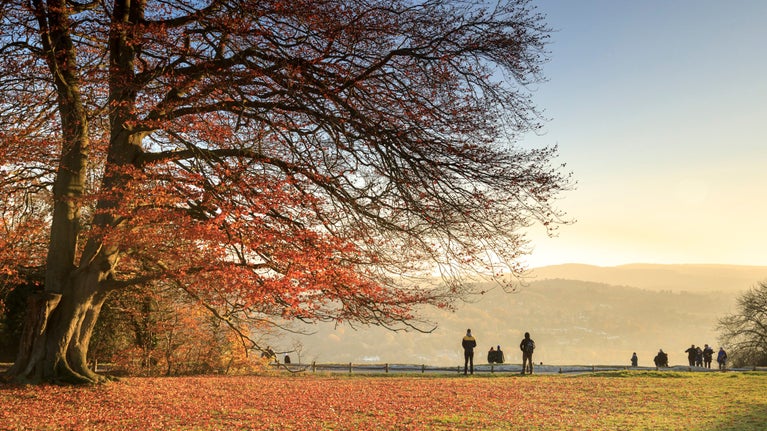
Help plant more trees
For only £10, you can plant a tree that will tackle climate change and support life for years to come. Your support will help to plant and establish 20 million trees by 2030.

With only 7,000 black poplars left in the UK, a pioneering tree planting project at Quarry Bank, Cheshire, is restoring the fortunes of this important native tree. Find out why this species is in decline and discover more about the work we're doing to preserve it.
The British Isles are home to only 30 native tree species, which play an important part in our economic and cultural history. Most common and widespread are species such as oak, ash and beech, but alongside these are more elusive or difficult to identify species, including the black poplar (Populus nigra ssp. betulifolia).
One of the rarest of our native trees, the black poplar is an inhabitant of floodplains and wet ditches, and was once a common sight in the countryside.
Drainage for agriculture has contributed to the gradual decline of black poplar, but more significant has been the loss of this tree's reputation as a versatile provider of timber. It was once a popular choice for construction, domestic and agricultural uses, and was used to make matches, floorboards, carts and many other everyday objects.
However, modern timber requirements favour faster- and straighter-growing species, or hybrids selected for these qualities, leaving the black poplar population at around 7,000 trees in the UK.
The loss of black poplar from our landscapes would impoverish our landscape and arboricultural history, depleting the UK's tree biodiversity and the creatures that rely on it for their survival.
Fortunately, new poplar trees can be propagated from long cuttings known as truncheons. This technique utilises the ability of most members of the willow family to sucker from roots, or shoot from cut limbs, to produce cloned offspring of the parents. This is a common strategy of trees growing in waterlogged areas where reproduction through seed may be less viable.
Another distinctive family feature relates to sex: botanists describe poplars as dioecious meaning that individual trees (and their offspring) produce either male or female flowers – but not both. There are thought to be only about 700 females in the UK (10 per cent of the total black poplar population), perhaps a consequence of the tradition of propagating replacements from male trees.

Many initiatives have been launched by conservation bodies at national and county levels in response to the decline of black poplar, and the National Trust is helping to give the species a secure future through distribution and planting more widely.
A number of National Trust properties have trees growing in natural and cultivated settings. At Westbury Court in Gloucestershire, several mature black poplars can be seen adding to the atmosphere of the Dutch-style water garden.
At Quarry Bank in Cheshire, National Trust rangers have been working in partnership with Chester Zoo, who run a breeding programme to produce 100 per cent genetic black poplar clones.
Quarry Bank sits in the middle of the River Bollin catchment, which was once a stronghold for black poplars, and is perfectly situated to reintroduce this native tree to the Bollin catchment. So far the rangers have planted 24 (12 female and 12 male) pure black poplars across the estate in strategic locations, in pairs, to maximise the chances of reproduction.
We aim to plant over 100 black poplars across the estate over the next two to three years, and are in talks with landowners around the Rover Bollin catchment about planting black poplars on their land.

For only £10, you can plant a tree that will tackle climate change and support life for years to come. Your support will help to plant and establish 20 million trees by 2030.
Discover how we work to support a rich variety of land, nature and wildlife across England, Wales and Northern Ireland.

Find out how we're planting and establish 20 million trees that will absorb carbon and help tackle climate change.
Ash dieback is a fungal disease affecting the country’s native ash trees. As many as four out of five ash trees may be affected and, where the dying trees could cause a threat to human safety, we need to remove them.

Hedgerows and orchards provide food for insects, homes for wildlife and a spectacle of spring blossom for humans. However, they are disappearing from UK landscapes. Find out more about what we're doing to bring blossoming trees and hedgerows back.
Discover how Warroch Hill farm in Perthshire, Scotland, was transformed into an award-winning woodland.